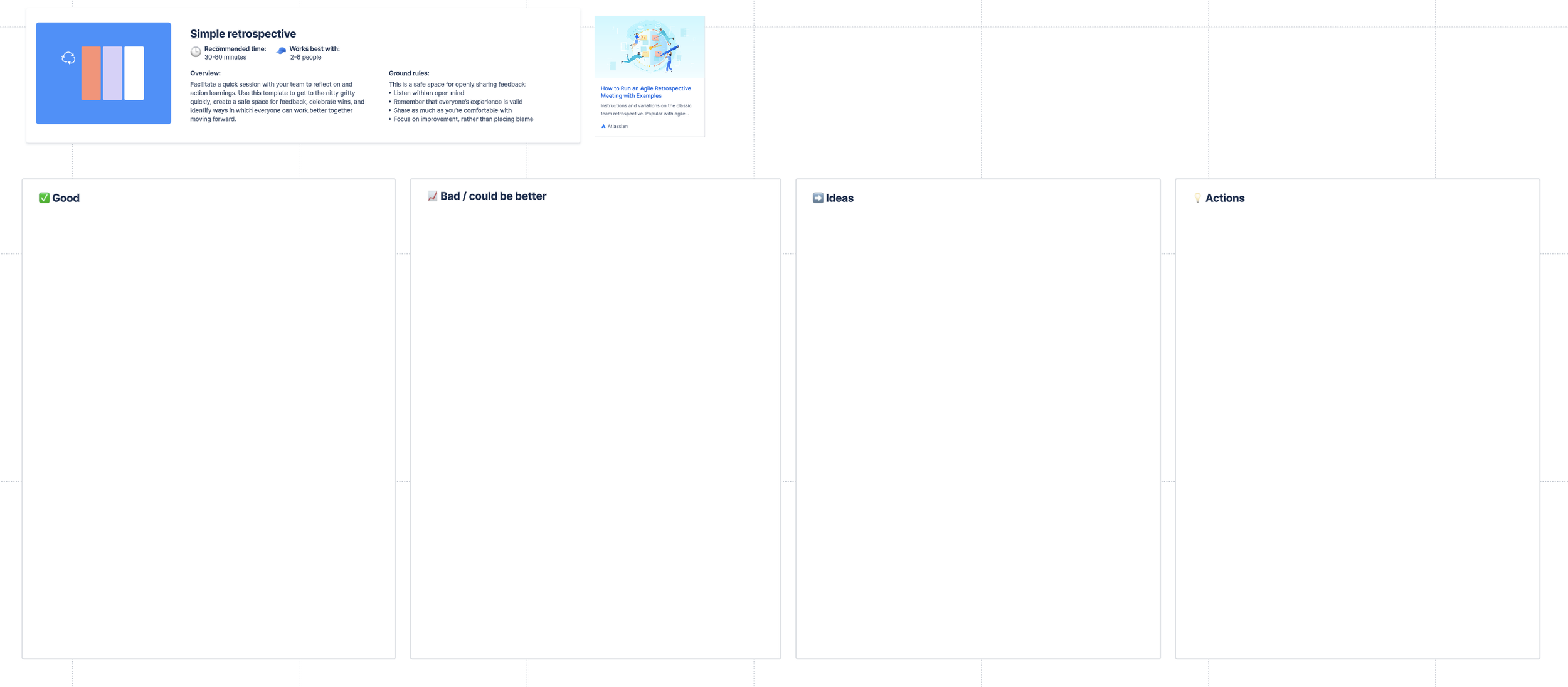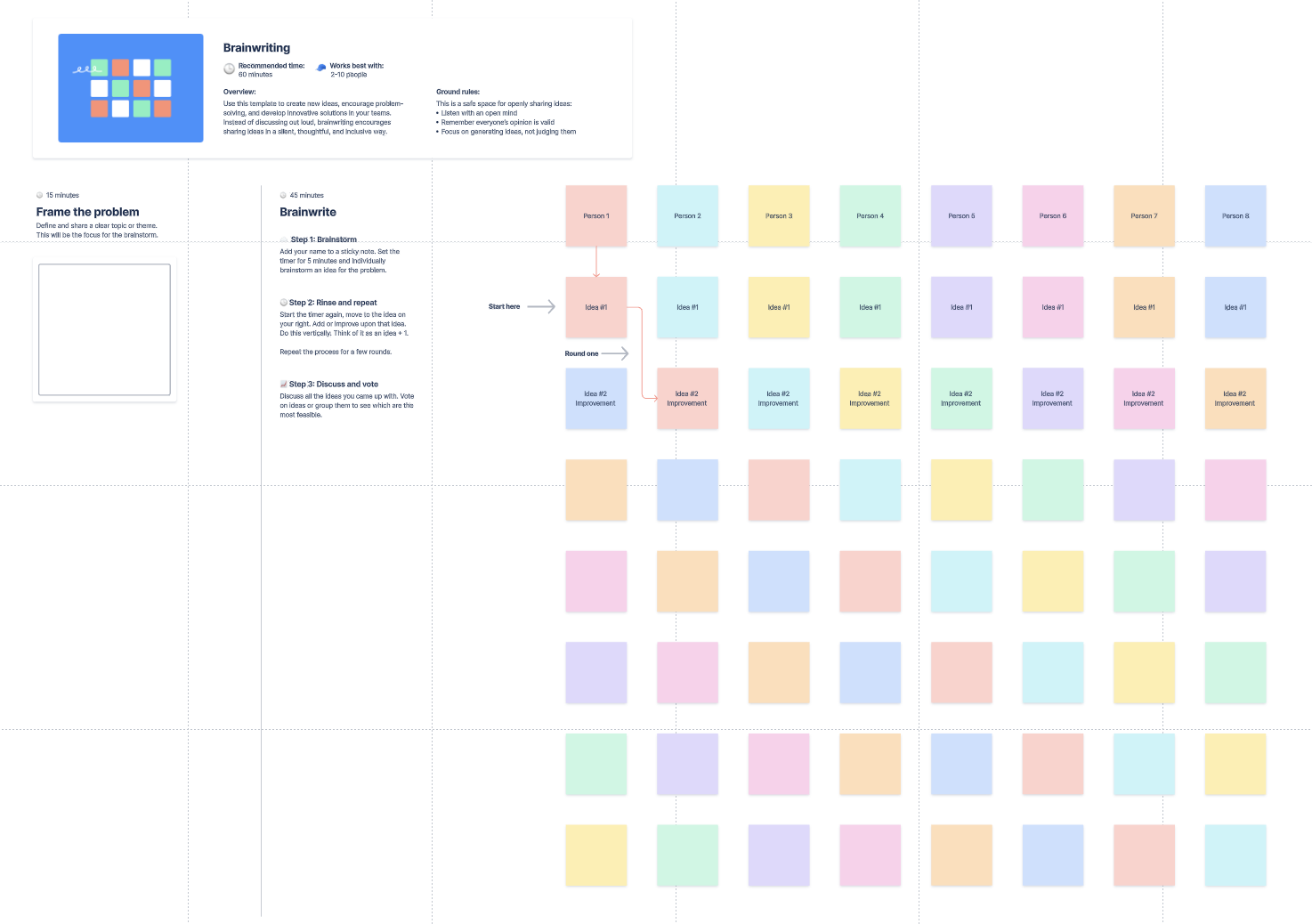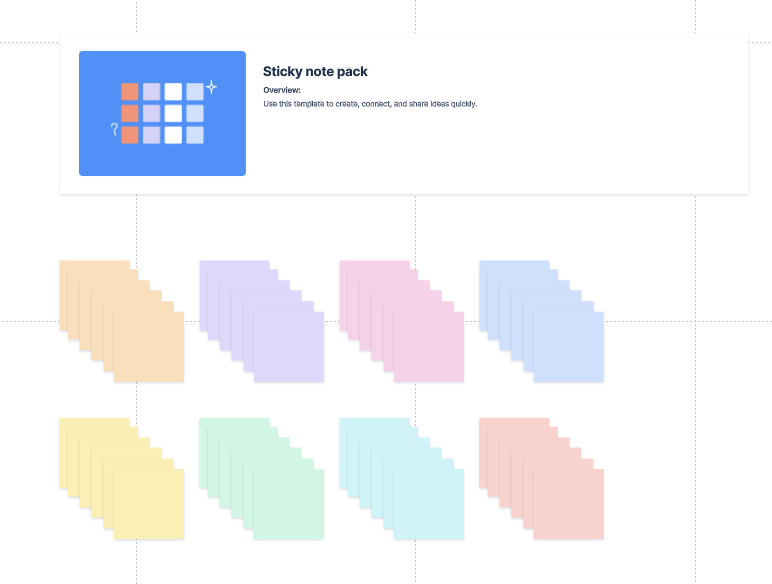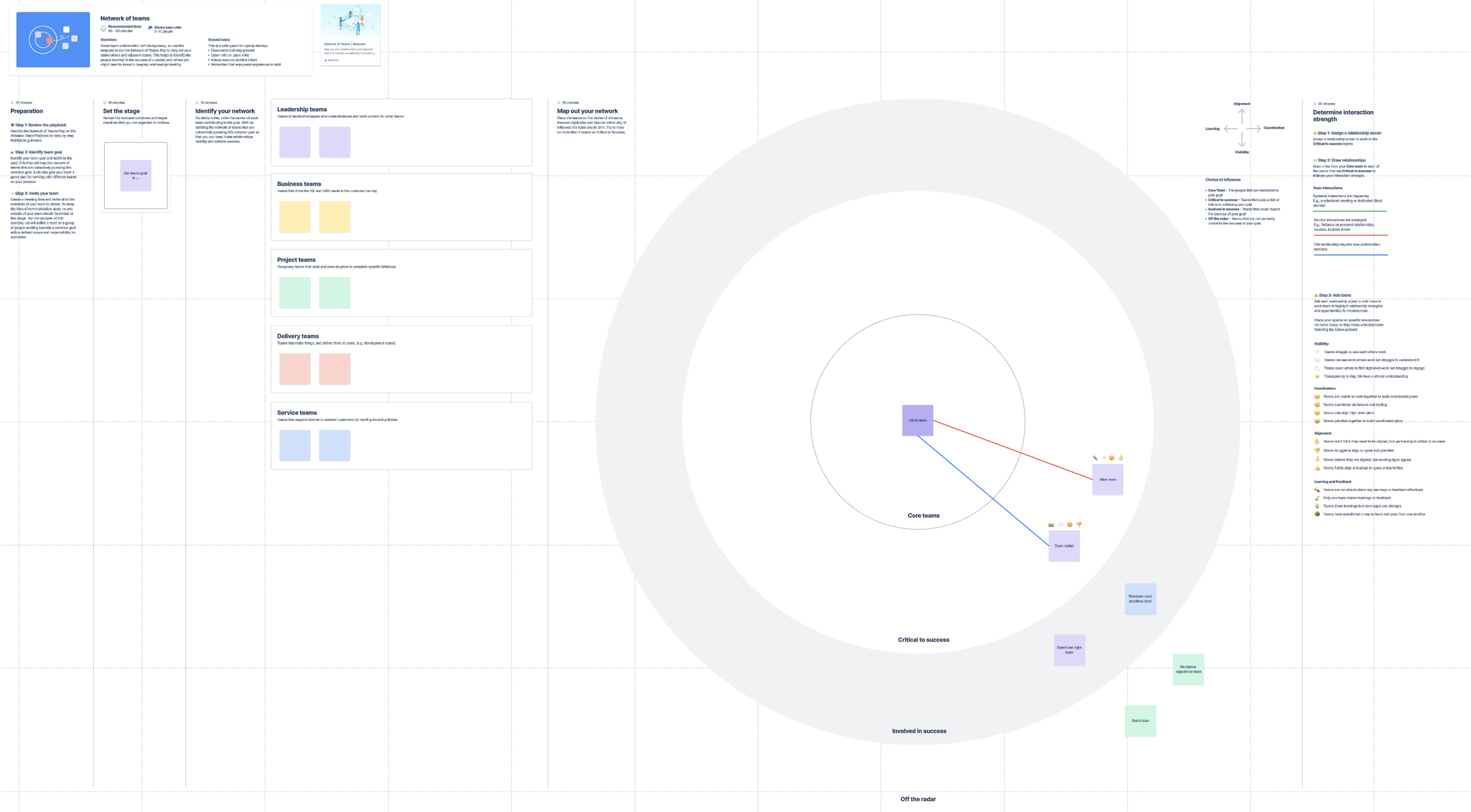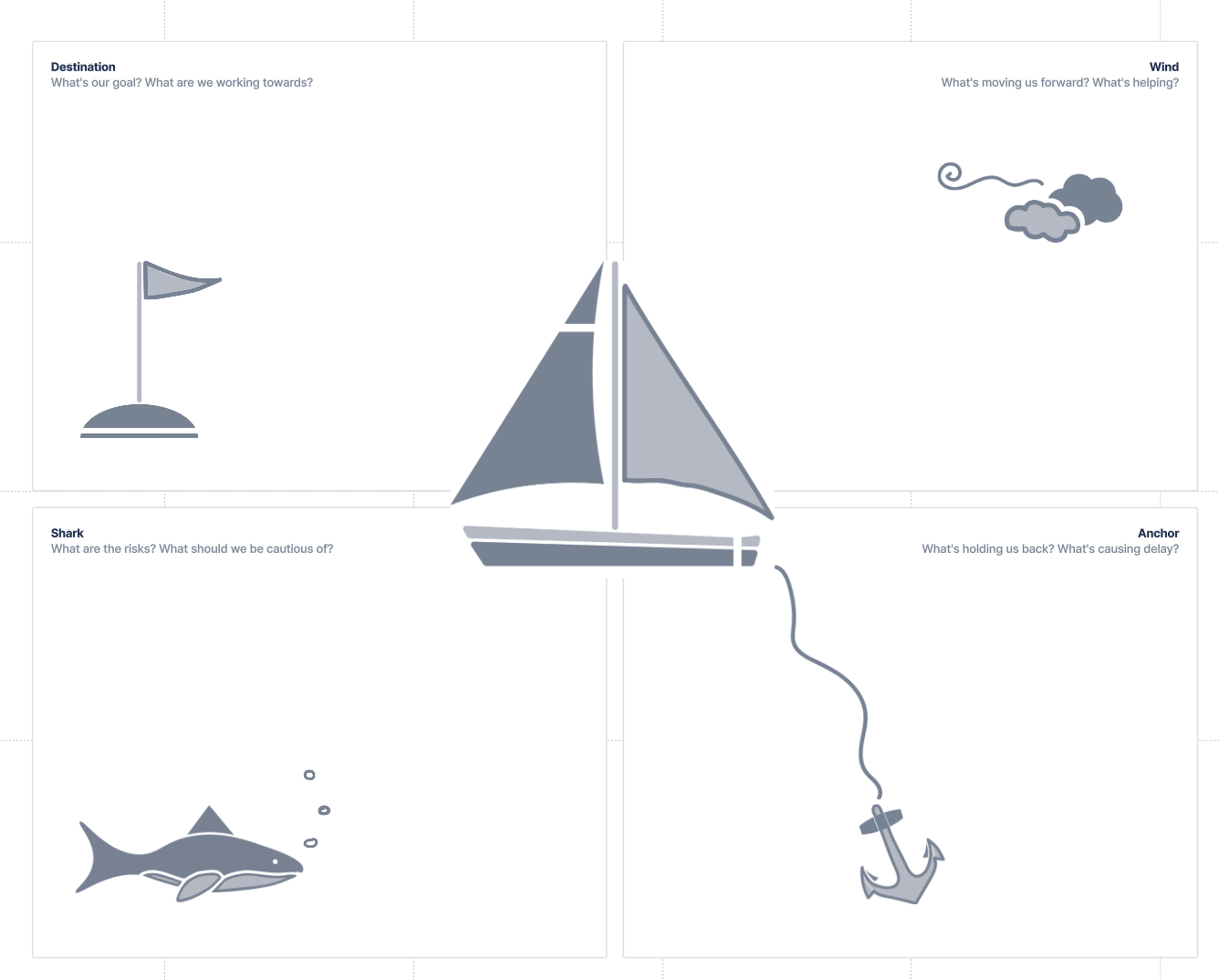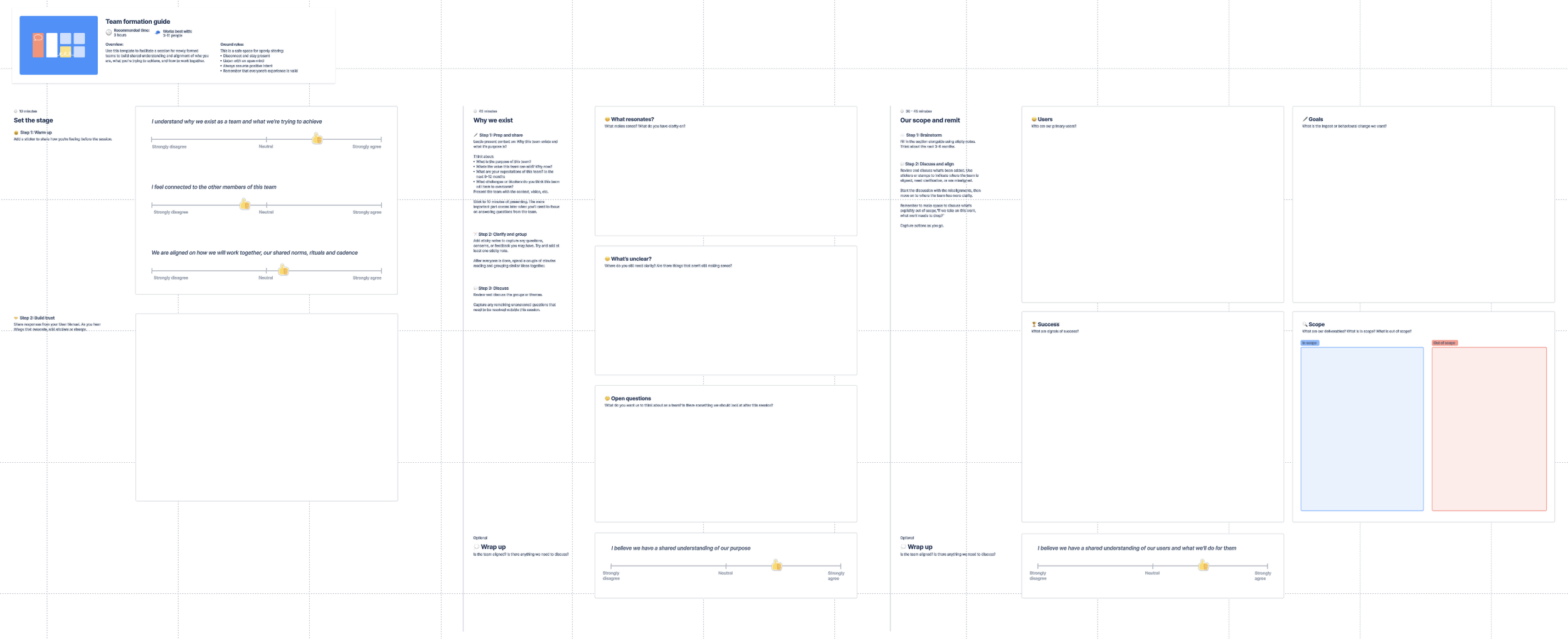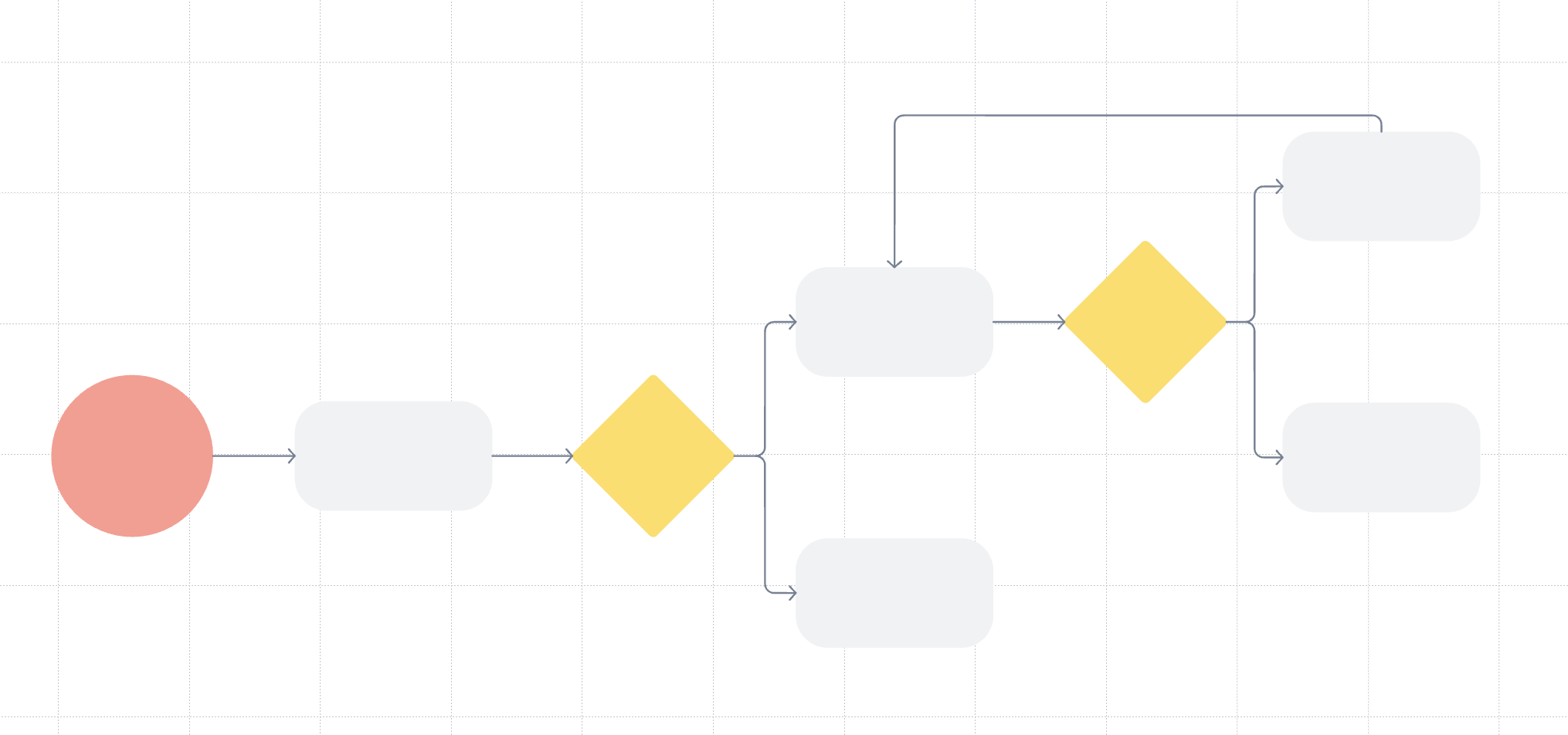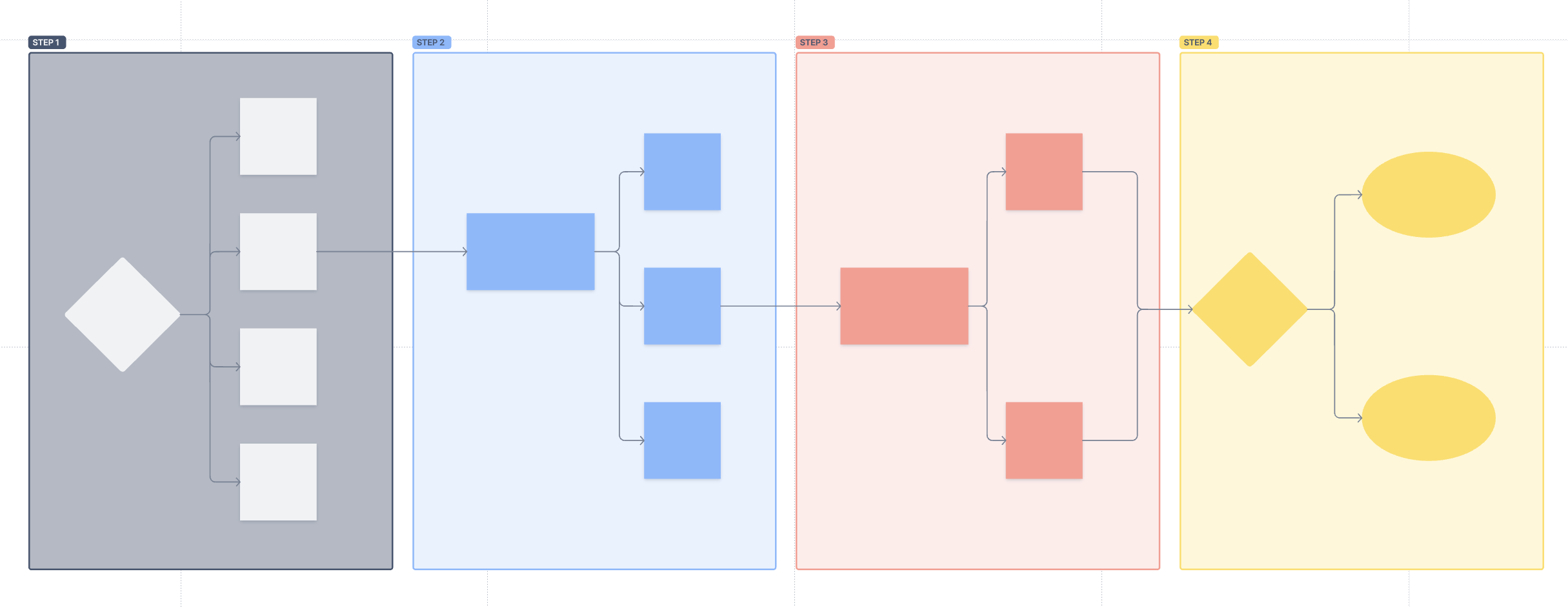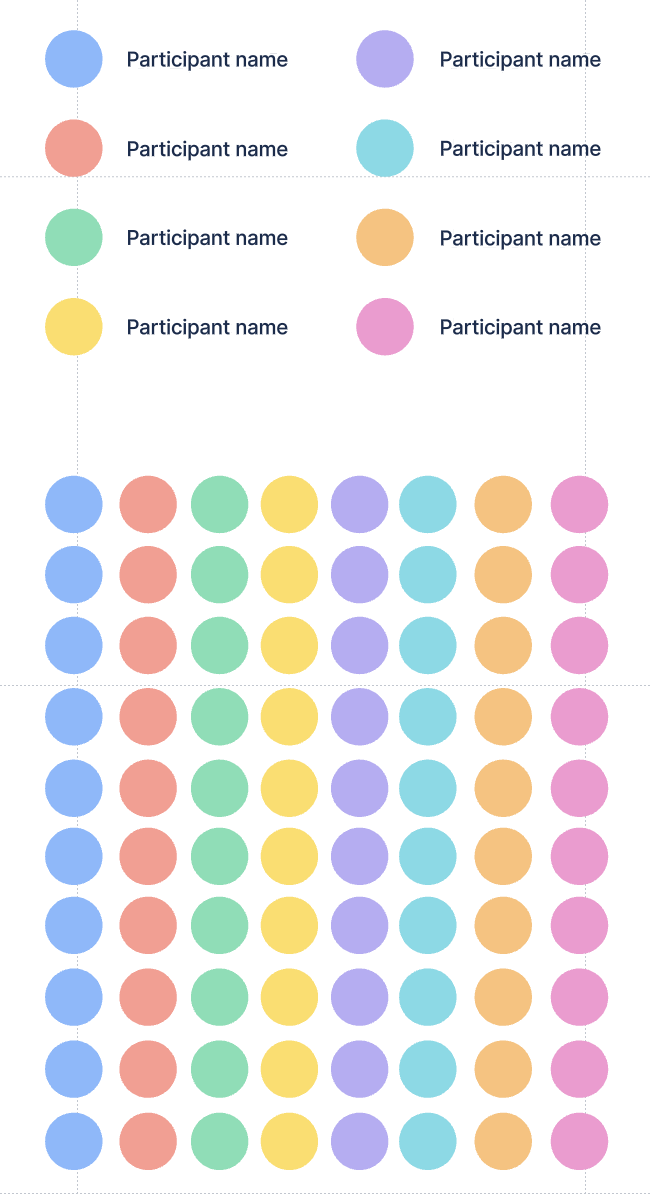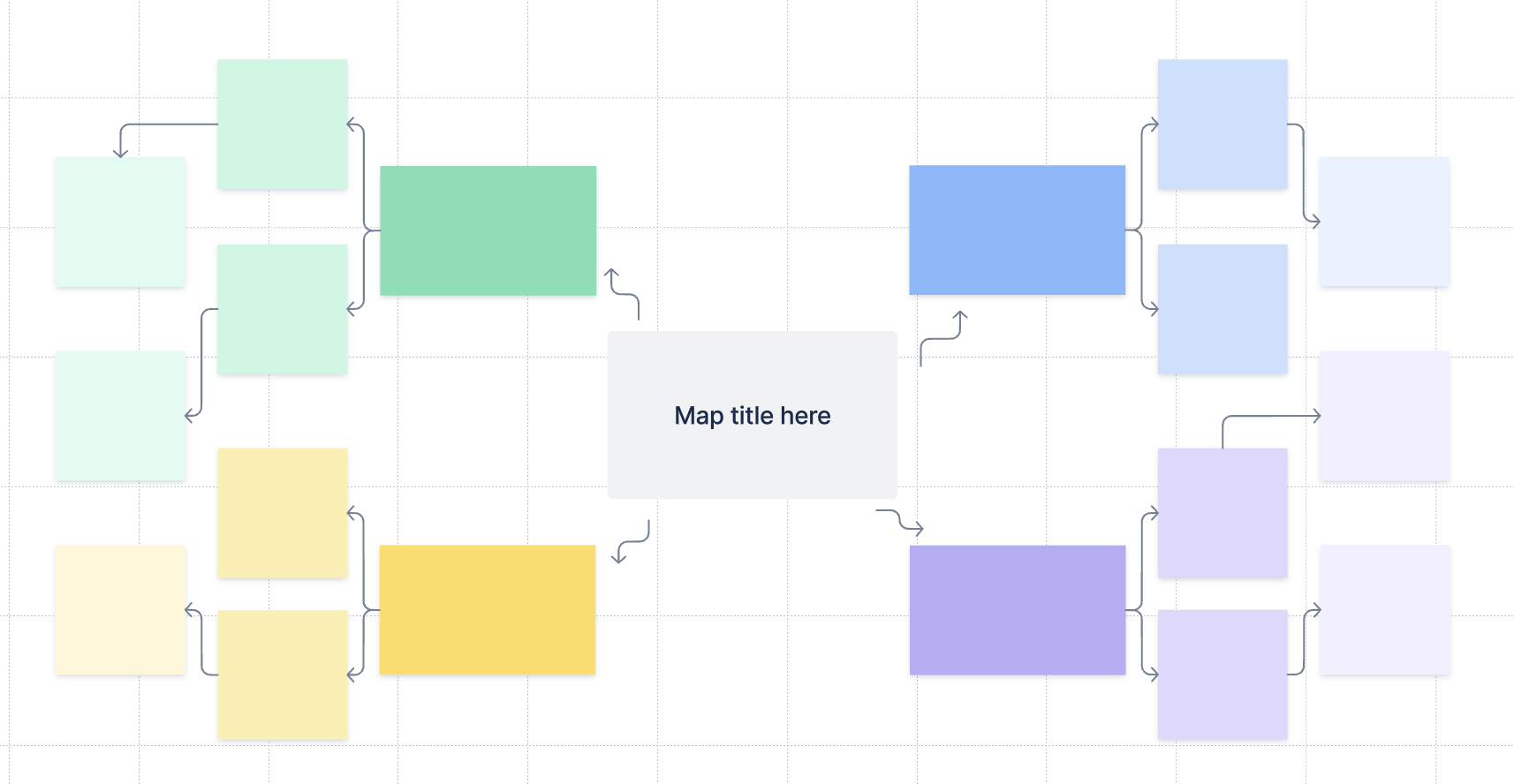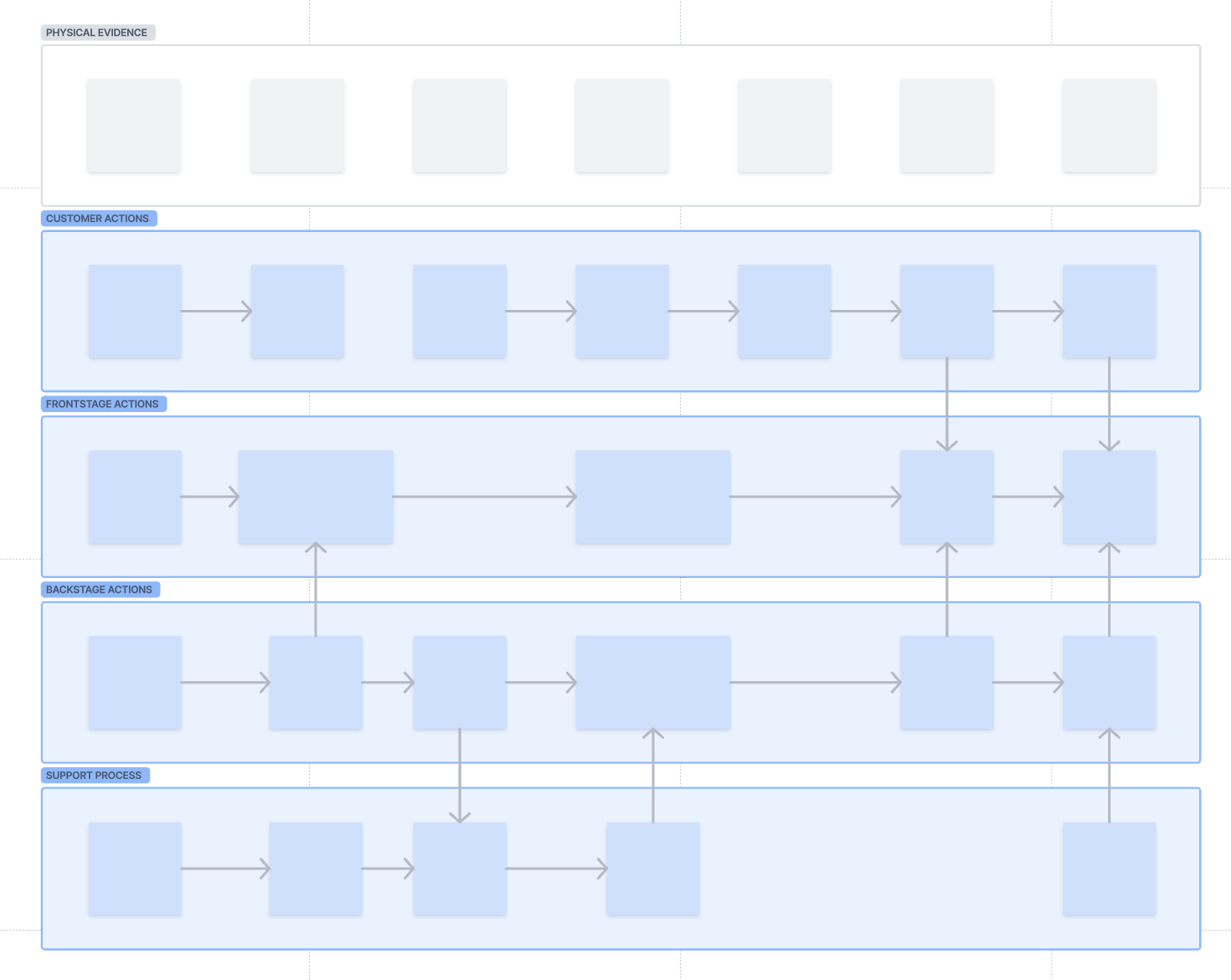Templates.
The design.
As an integral part of the early development of Confluence's Whiteboarding tool, I led the creation of over 30+ features. One of the projects that significantly positively affected users and entailed multidisciplinary collaboration was the Templates project. This project had several crucial aspects, including identifying the essential templates to include, defining the structure and steps for each template, establishing a framework for future template designs, crafting a user-friendly modal for template access, designing engaging illustrations for templates, and effectively promoting these templates on our global Atlassian website.
We selected the templates to create, prioritizing them based on valuable insights gathered from user feedback and thorough competitor analysis. Currently, Confluence Whiteboards boasts a total of 19 templates within the product, with an additional 10 in the pipeline. The structure and layouts of these templates were thoughtfully designed, drawing inspiration from competitor research and comprehensive secondary research into common steps and objectives.
To ensure the templates catered to a wider range of user needs, I conducted interviews, particularly for templates that had broader use cases with various roles. An illustrative example of this approach was the development of the 'Incident Post-mortem' template, for which I interviewed our engineers and even observed an actual post-mortem session.
In the context of the modal, I delved into information architecture, aligning it with other menu structures prevalent in Atlassian products while categorizing and mapping the templates for streamlined access and consistency.
The process.
-
We started the project by collaborating with our product managers to strategize and determine the selection of templates to create. Concurrently, I conducted a competitor analysis and secondary research on each facilitation template. I explored the display of templates within our product and examined categorization practices both within and outside of Atlassian.
-
I initiated the template creation process by establishing a foundational flow for each template, collaborating closely with our content designer and Product Manager to refine and enhance it. Subsequently, I delved into the elements that could effectively differentiate steps and delineate activity spaces within the templates.
I then proceeded to create these templates within the product and encouraged the team to use them for a week, actively collecting valuable feedback from these sessions. This feedback informed iterative adjustments to terminology and structural elements for improved user experience. Additionally, I crafted a framework outlining guidelines and rules for the team's use.
Once the templates had achieved a polished state, Began the design of the template menu. I looked into information architecture in Atlassian menus, to ensure mental models cross-product align. I conducted internal discoverability tests to ensure correct categorisation.
-
I collaborated closely with our engineering team to integrate the templates and the template modal into the product, addressing edge cases and ensuring smooth interactions. Our final step involved conducting a thorough team test of the feature to guarantee a seamless user experience before making it available to our customers
The impact.
Templates represent one of the most widely embraced features within Whiteboards, and to this day, we continually receive consistent user feedback validating the efficiency they bring to collaborative efforts on whiteboards. We have a constant demand for new templates - with hundreds of requests pouring in each month. Due to this popularity, the feature is displayed on our core marketing page on the Atlassian website.



